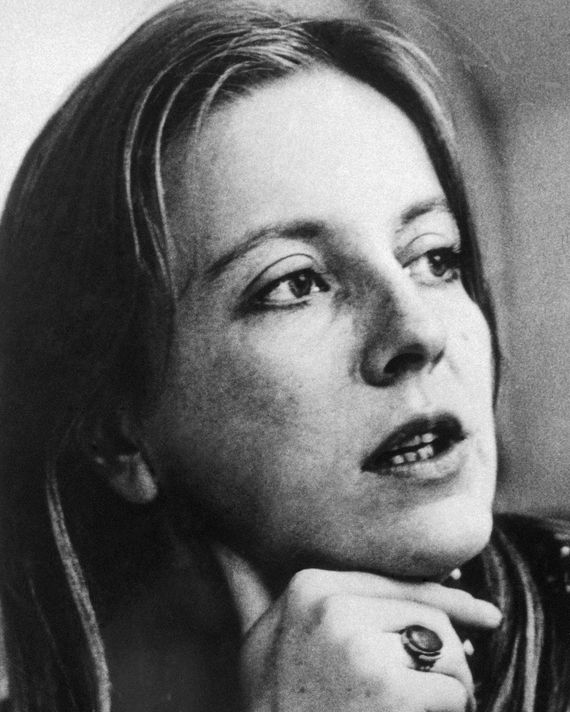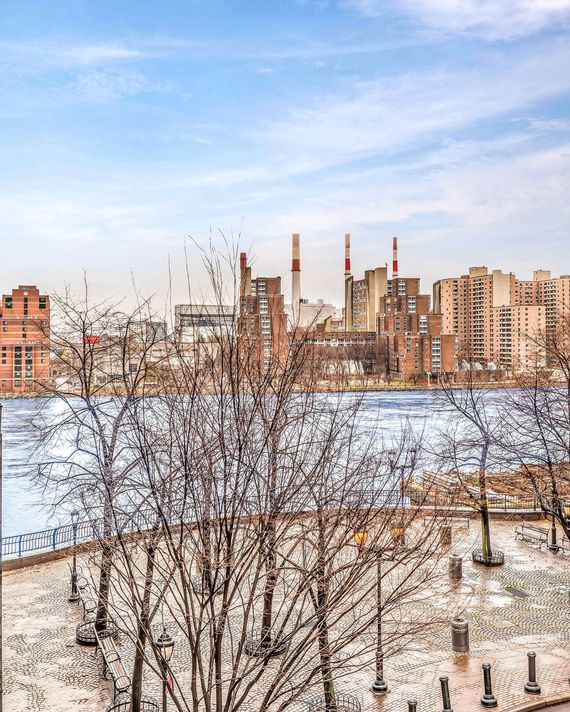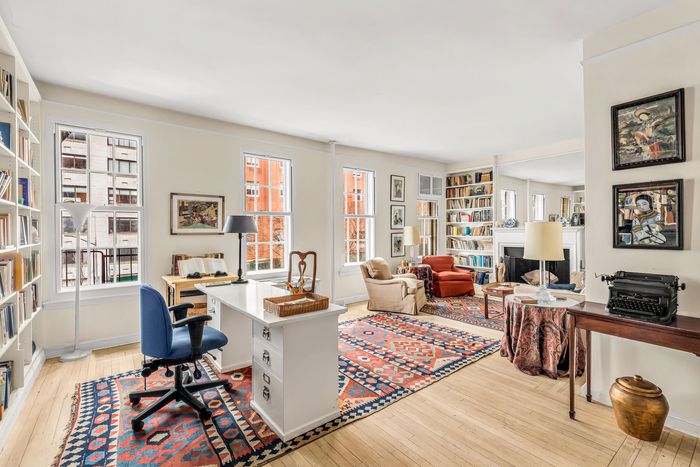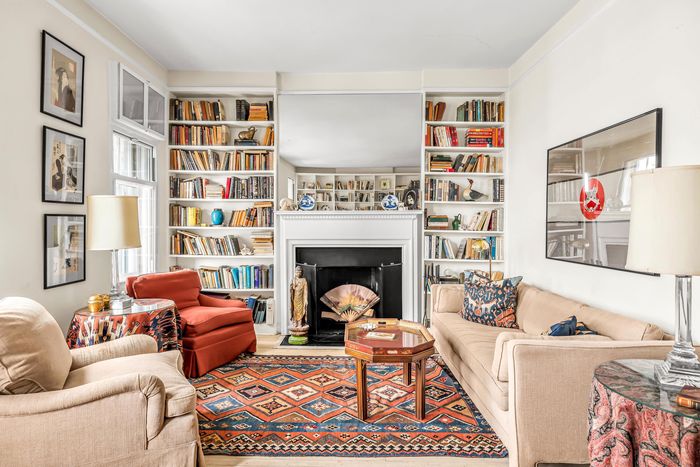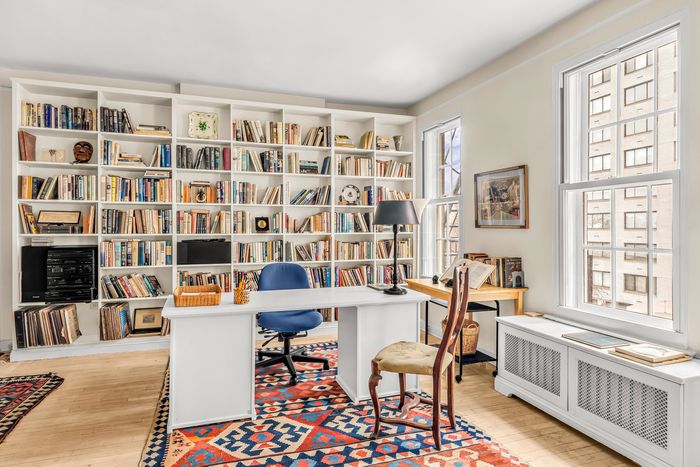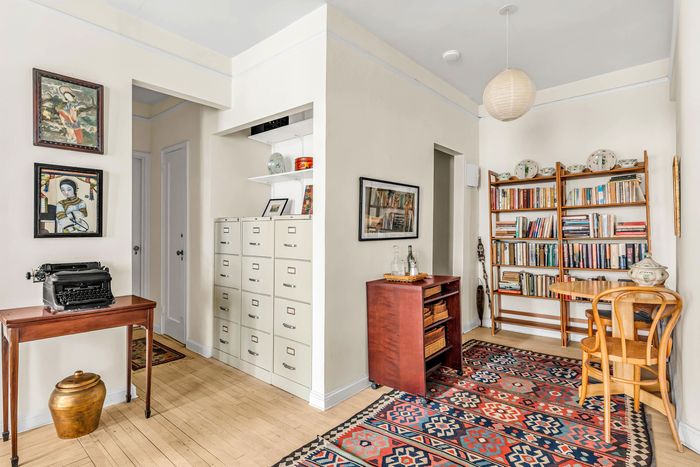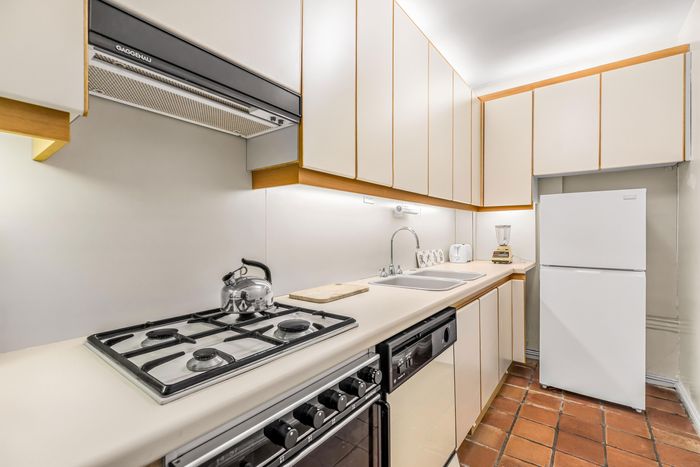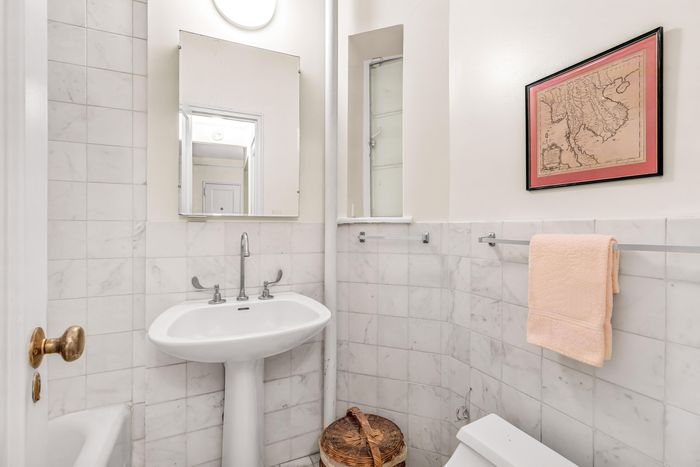Frances FitzGerald Selling her East 72nd St Studio

Photo: Eitan Gamliely for Sotheby’s International Realty
Frances FitzGerald ended up on East 72nd Street by way of Paris. As a correspondent there in the early 1960s, she mingled with The Paris Review set but didn’t stay for long. The biggest story of her era was in Vietnam, and she went there to cover it — writing the first major American book to come out of the conflict, Fire in the Lake, which was serialized in The New Yorker and won the Pulitzer. It left her with an armload of trophies and a sense of loneliness. “I had sort of been keeping myself closeted,” she said. “I thought, Well, I want to go back home.”
Around the same time, the editors of The Paris Review, whom she’d kept in touch with over the years, were having a similar thought. And in 1973, Paris Review editor George Plimpton bought units at 541 East 72nd Street, a former tenement building poised over FDR Drive, with views of the river, that had just become a co-op. The magazine would run on the ground floor, Plimpton would live upstairs, and a walk-up on the fourth floor was available. When she heard of the unit from Plimpton, she decided to buy it. “Things were a little cheaper then, and I could afford it,” said FitzGerald. Downstairs, one of the magazine’s parties would draw an old Parisian crowd she enjoyed seeing again, including Norman Mailer and Robert Silvers. Friends in the writing world would stop by, including Elizabeth Hardwick, Susan Sontag, and Joseph Brodsky.
The row of four six-story brick walk-ups spanning from 527 to 541 East 72nd Street was built in 1894, when living off the sewage-filled East River, teeming with coal barges, would have undercut the allure of river views. Once the area was cleaned up, developers tried to raze the row and build a tower. The first attempt was foiled by the 1929 stock-market crash; the second, in the ’80s, faced protests from famous residents, including Plimpton and FitzGerald. By then, the row had a certain cachet. The buildings had been renovated in 1938 by the trendsetting Carmel Snow, a Harper’s Bazaar editor married to a real-estate developer who filled apartments with their high-profile friends. “This was a new building type, the Social Register tenement,” reported Christopher Gray. It was never clear if Snow herself oversaw the paint job that would earn the buildings their nickname — the Black and Whites — or if it was later that the brick was swathed in black, making the white trim of the windows pop like a stripe of vanilla in an ice-cream sandwich.
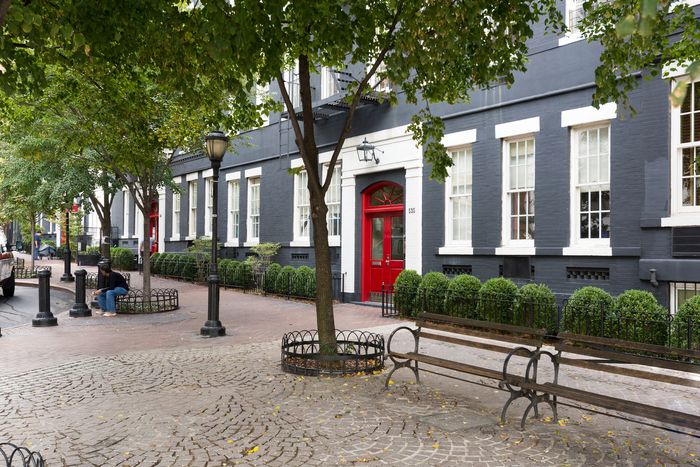
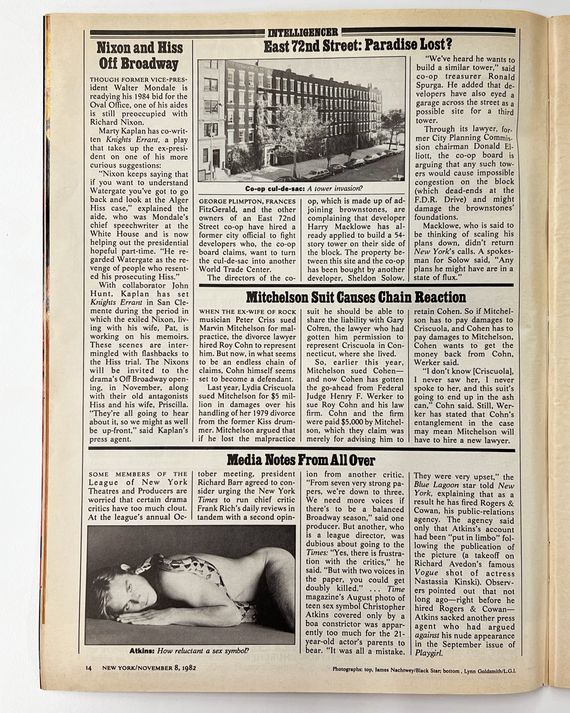
Left: A 1982 article in New York mentions FitzGerald in the first sentence of a story on tenants fighting a plan to raze the buildings. Right: The Black and Whites. From left: Photo: New York MagazinePhoto: Eitan Gamliely for Sotheby’s International Realty
Left: A 1982 article in New York mentions FitzGerald in the first sentence of a story on tenants fighting a plan to raze the buildings. Right: The Bla…
Left: A 1982 article in New York mentions FitzGerald in the first sentence of a story on tenants fighting a plan to raze the buildings. Right: The Black and Whites. From top: Photo: New York MagazinePhoto: Eitan Gamliely for Sotheby’s International Realty
In the 1990s, FitzGerald bought a new apartment with her husband, James Sterba, a Wall Street Journal reporter. Sterba worked from their new place, but FitzGerald would walk to her old apartment at 541, writing there until it sold. Then, when a studio at the Black and Whites was available, she bought it to keep working. For about 20 years, she would show up every weekday to the sunny, south-facing room and work from 10 till 5 p.m. from a desk that looked south with the books she needed on her left. If she wanted to read, she’d invariably end up on the couch next to a wood-burning fireplace. A large hall closet was opened up and turned into a repository for her filing system, with sections on “Reagan,” “Religion,” “Articles,” and “Organizations.” A record player was there for when she took breaks, and a kitchen and a dining nook ensured she never had to leave. “I could go into that apartment and spend the whole day happily by myself,” she said.
Fitzgerald the year she won the Pulitzer.
Photo: Bettmann Archive/Getty Images
Over the years, she became more sensitive to noise and added a second layer of glass to the windows. Now, closing the door has the effect of dropping one’s ears below the bathwater, and even movement inside feels muted thanks to the Iranian rugs she has been collecting since a trip there in the 1970s. The studio is where FitzGerald wrote Vietnam: Spirits of the Earth, a 2011 glimpse of contemporary Vietnam, and The Evangelicals, a 2017 work about the marriage of religion and right-wing politics, which was a finalist for the National Book Award. She and Sterba ended up retreating to Connecticut at the start of the pandemic; she took with her the papers and books she was using to write her next book, on paleoanthropology. Since the papers are still there, that’s where she is, too, a situation she doesn’t see changing. So she’s selling the studio.
When her broker, Gordon Roberts, first walked in, there were so many books that he found himself “‘aerating’ the shelves” by storing some in boxes and closets. Roberts has represented the buyers and sellers of six or seven units at the Black and Whites since 2004, shortly after Plimpton’s death. The magazine moved in 2018. So FitzGerald’s departure, he said, “does represent the end of a literary era here.”
“It certainly was a great place to work,” she said.
FitzGerald’s first apartment at the Black and Whites had this view over the end of the cul-de-sac toward the river. The studio she is now selling is further from the water toward York Avenue, but crane your neck to the left and you can still see the river.
Photo: Eitan Gamliely for Sotheby’s International Realty
The studio at 531 East 72nd Street is Frances FitzGerald’s second office in the Black and Whites. She downsized here in the 1990s, after marrying the writer James Sterba, and buying a larger apartment with him.
Photo: Eitan Gamliely for Sotheby’s International Realty
The studio was likely originally configured as a one-bedroom, says her broker Gordon Roberts, who thinks a wall may have once cut off the sitting area from the rest of the apartment. The couch is where FitzGerald would read; it came from her childhood home nearby.
Photo: Eitan Gamliely for Sotheby’s International Realty
FitzGerald kept her books arranged by topic and theme. Near her desk are works on religion and politics that helped her to write the prescient 2017 book The Evangelicals.
Photo: Eitan Gamliely for Sotheby’s International Realty
The typewriter is one of several that FitzGerald has owned through the years. The filing cabinets fill what was once a closet and still hold her research, organized by subject. Beyond them are two smaller closets and a full bath.
Photo: Eitan Gamliely for Sotheby’s International Realty
Just off the dining nook is a full kitchen with enough storage for researching two more books.
Photo: Eitan Gamliely for Sotheby’s International Realty
The bathroom. An antique map of Vietnam over the toilet was a gift from the writer David Halberstam.
Photo: Eitan Gamliely for Sotheby’s International Realty
Photo: Sotheby’s
Source link

